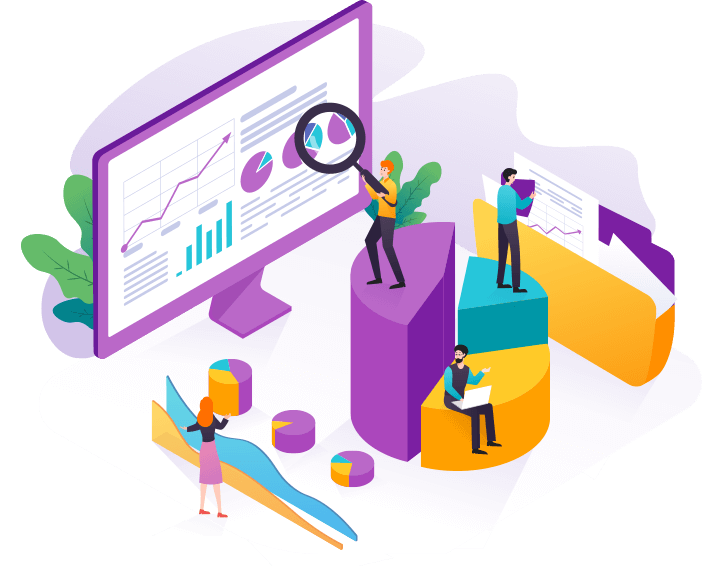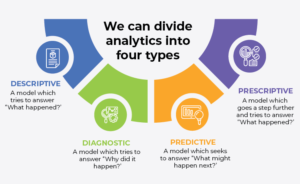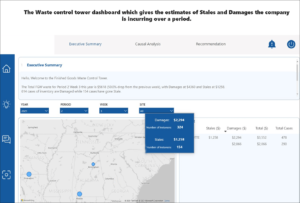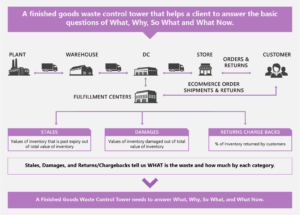Prescriptive Analytics – Enabling Precision in Decisions for a Favorable Future
Collecting data is one thing. But enabling it to influence your business decision-making is an entirely different ball game. Businesses today are more concerned about the latter, which is why analytics have started playing a significant role in everything they do.
We will be looking into prescriptive analytics, which is being touted as the future of data analytics.
Businesses need a lot of planning. Irrespective of what they do, they always have many uncertain events and are tasked with finding ways to mitigate risks and chart the best possible course. This is where the prescriptive power of advanced analytics plays a vital role.
This article will walk you through the basics of prescriptive analytics, its benefits, and some real-life examples to give you an in-depth understanding.
What is Prescriptive Analytics?
In general terms, prescriptive means “what should one do next.” Businesses can leverage insights from prescriptive analytics to strategically plan the next move and make data-backed decisions. Prescriptive analytics is the culmination of Descriptive, Diagnostic, and Predictive analytics processes, and uses AI and ML to analyze large volumes of raw data and identify what’s valuable to the company and can help them make informed decisions.
Prescriptive analytics considers the current scenario, past performance, and available resources to chart the ideal course of action. It can be applied for the near future, or businesses can leverage its abilities to plan long-term.
How does Prescriptive Analytics work?
When we try to answer what we should do next, we focus on understanding the resources we would need to reach there and the chances of a favorable outcome.
Prescriptive analytics answers this query in specific contexts, albeit more efficiently and effortlessly. All of it is made possible through AI technology such as machine learning (ML) and natural language generation (NLG), which allow the analytics process to be automated, flexible and accurate. With ML at its disposal, it can comb through terabytes of data within a fraction of the time compared to humans. It further eliminates any possibility of human error, bias, and other factors which can impact the business intelligence generated.
Moreover, whenever new or additional information is fed to it, its ability to adapt enables it to make the requisite changes and automatically prescribe the best course of action, which would have taken humans significantly more time to achieve on their own.
In most cases, prescriptive analytics works in tandem with predictive analytics (a model which depends on statistics and modeling for predicting future outcomes). Prescriptive analytics harnesses the results produced by the latter to recommend future courses of action or strategies that businesses could use.
Related: Nonlinear Programming for Prescriptive Analytics
Benefits of Prescriptive Analytics
Prescriptive analytics makes things easier. Here’s how:
Reduces the impact of human bias
Manual decision-making often suffers the inherent risk of being affected by human bias. When you start depending on prescriptive analytics, you reduce human intervention and increasingly leverage ML and AI processes for a slew of functions. Add to that its ability to comb through data faster, and you get a model capable of eliminating human bias and churning out actionable intelligence with greater accuracy in a fraction of the time.
Chart your tomorrow more efficiently
For businesses to succeed, they have to fiddle through a plethora of possibilities and take the best possible course of action using a mix of data, experience, and instinct. With perspective analytics, you get access to models capable of harnessing organizational data to produce a roadmap that tells you what to do and how to do it right. The usage of AI enables it to simulate several possible scenarios and ensure that the steps it suggests are capable of mitigating potential risks while helping organizations ensure the efficiency and effectiveness of their business decisions.
Acts as a support to organizational endeavors
Sustained growth requires robust planning and streamlined execution consistently. Prescriptive analytics empowers decision-makers within every business function with actionable intelligence derived from the analysis of forecasted data in conjunction with real-time enterprise data. These specific recommendations make it easier for the brand to understand the possibilities and put its best foot forward no matter the initiative being undertaken. And with data supporting business decisions at every level, the success of organizational endeavors skyrockets, and the business is strengthened from the ground up.
Automate analysis, focus on execution
Prescriptive modeling is a complete package in itself and can process data better than humans, and that too at a rapid rate. The faster turnaround lets decision-makers ascertain what to do, rather than trying to figure out what may happen and what solutions are available. With data guiding business decisions, employees can not only spend more time acting and less time trying to figure out what needs to be done; but can engage in more creative pursuits, customer-focused initiatives, or identifying new revenue streams.
Use Cases of Prescriptive Analytics
Prescriptive analytics finds usage wherever there is uncertainty. And with the past two years being evidence of external factors wreaking havoc on entire industries, businesses are increasingly adopting prescriptive analytics to mitigate risks, fluctuations, and volatile conditions.
Here are some use cases of prescriptive analytics capabilities to help you get a better understanding of their scope of impact.
Health and Wellness
Hospitals and clinics use prescriptive analytics to offer better solutions to patients. They can use the patient’s previous data to determine which patients are more prone to readmittance or need constant follow-ups. Hospitals can further keep the emergency room ready for patients having life-threatening diseases. During events such as a global pandemic, analytics can help to identify critical patients, prescribe processes with greater efficacy, and even aid inventory management.
Airlines
The airline industry makes huge profits and mitigates unforeseen losses with the help of prescriptive analytics. By using its suggestions, the decision-makers can adjust ticket pricing based on factors such as customer demand, weather conditions, gas prices, and other factors.
Banks and Financial Institutions
With prescriptive analytics making its way into the BFSI sector, financial institutions can take better decisions to increase their customer engagement, reduce churn, and increase customer retention. Insights influence business decisions and data-based initiatives yield favorable results. For example, banks can improve ways to upsell or down-sell their services, create models for customer relationship management, enhance data security, and actively thwart fraudulent activities which threaten their credibility.
Marketing and Sales
Marketers and sales professionals can make use of prescriptive analytics to understand customers better. Analysis of customer, marketing and sales data offers deep insights into customer behavior, customer experience, and the efficacy of marketing and sales initiatives. Prescriptive analytics offers the business intelligence required to develop a better product, deliver smarter solutions, deploy effective campaigns, optimize customer satisfaction, and maximize ROI.
Prescriptive Analytics Delivering Business Value: A Course5 Case Study
A leading global CPG company wanted to minimize the wastage of finished goods across plants, warehouses, and other facilities. The client requested a forward-looking solution that would be able to identify the proportion of inventory about to go to waste and suggest pre-emptive measures to counteract this waste.
Course5 furnished the client with our proprietary AI-powered augmented analytics solutions – Course5 Discovery. An integrated platform with natural language querying capabilities, delivering relevant and easily consumable actionable insights, in near real-time.
Discovery enabled data aggregation from multiple data sources such as warehouses, transportation, shipment, and sales. The ML models of the platform analyzed the data in real-time to identify anomalies, trends, causal insights, and offered relevant recommendations for reducing inventory waste.
The platform witnessed a 100% adoption rate by Site Managers across the sites where Discovery was deployed. With Site Managers conforming to Discovery’s prescriptive recommendations, the client was able to optimize their inventory management and experienced around a 30% reduction in their Stales and Damages.
In the current scenario, the multitude of data and its complexity make it easier for businesses to get their decisions wrong and only realize it after it’s too late. While prescriptive analytics don’t help predict the future, it plays a crucial role in describing the potential outcomes of action depending on the factors involved.
Get in touch with us for a demo of Course5 Discovery, and how we enable businesses to streamline their decision-making by optimizing processes, formulating strategies, and taking enough pre-emptive steps to ensure the ship remains steady and organizational goals are achieved.
Don’t miss our next article!
Sign up to get the latest perspectives on analytics, insights, and AI.







